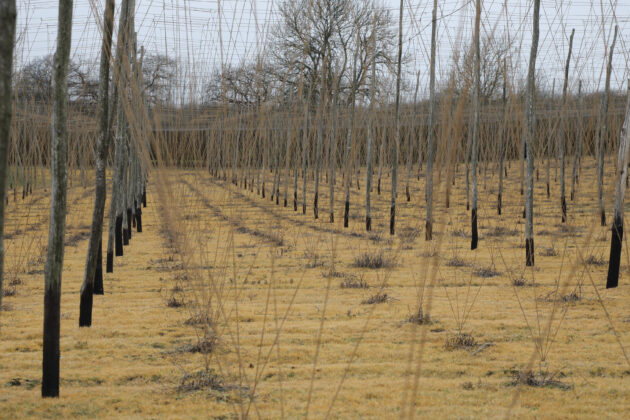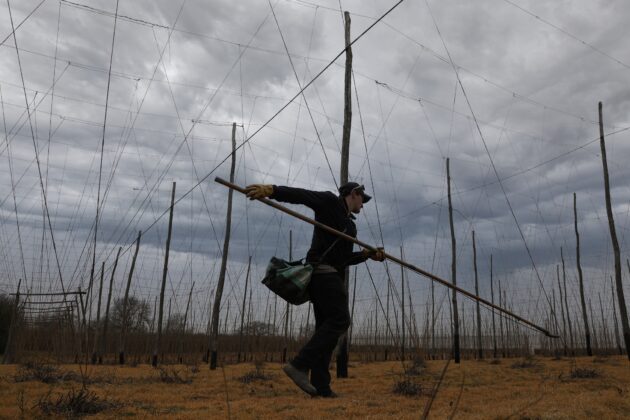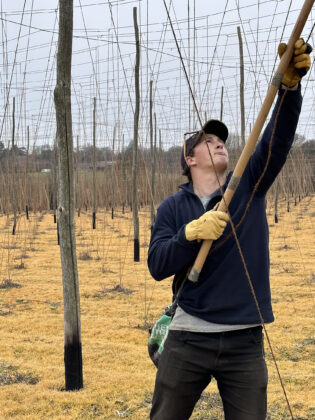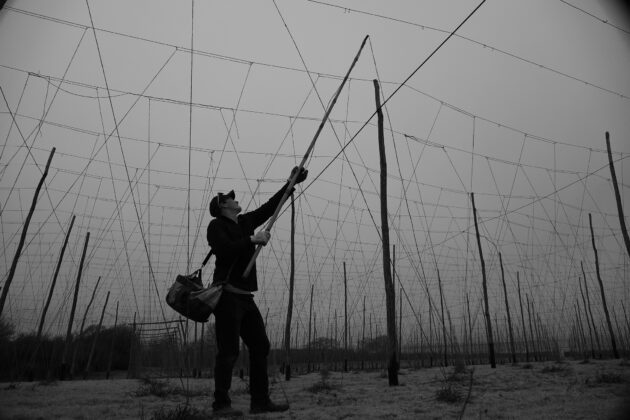Tibbs Farm. What first comes to mind if you ask people in the town is strawberry-picking in June and Christmas trees, but there is so much more going on in this enterprising business on the very doorstep of Rye, as this article, the first of several, aims to show.
Hops have been grown at Tibbs Farm for hundreds of years, and the Wheeler family has been hop growing with continuity for ten generations. The harvest of the crop, destined for the brewing industry, takes place from the end of August to the middle of September but before that there are many processes to work through.

It is the season of hop stringing at Tibbs Farm at the moment and Phil Wheeler learnt the art three years ago. This involves working along the rows adding strings to the overhead wire work for each plant, up which the hop bines can grow. Each will have a staggered “V” of strings, four per plant. The string goes between the screw peg in the ground and the hook on the top of the wirework 14ft above, to create the hop-growing framework. The plants grow on coconut coir string as its rough texture is ideal for the hops to cling to. A good ‘stringer’ may thread up to twenty km of string in a day in this fashion using several hundred kilometres of string a year. The video below will give a glimpse of the technique used.
From a once thriving industry rich in heritage and synonymous with Kent and Sussex, the English hop business has, over the last century, declined to a level where there are as few as fifty growers across the country, mainly in Kent, Sussex and the West Midlands.
Growing hops is one of the hardest crop choices in farming; they require a high attention to detail throughout the year and are particularly vulnerable to disease. There is a certain pride at being part of this group of traditional hop-growing farmers with much of the crop destined to be enjoyed through the cask ale market.
Tibbs Farm has a wonderful café with stunning views overlooking the hop gardens nestled in the exquisite Tillingham Valley.
Image Credits: Kt bruce .










